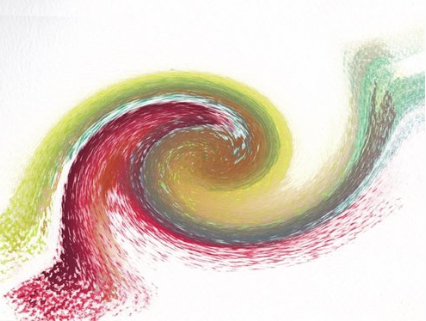How to Say No …gracefully by Katy Tuncer
Imagine you are not yourself, but you are “in charge” of you. You can deploy yourself to any set of tasks and activities you choose, in life and work.
“Rules of Thumb: My Own Coaching Heuristics” by Dr. Lilian Abrams, Ph.D., MBA, MCC
I have realized over my time as an executive coach (and prior to that, as an OD consultant) that I have assembled my own personal treasure box of what I call “heuristics”. These are the pithy sayings, models, and go-to concepts that I have found useful in describing my meaning, in terms of providing a contribution to my client in that moment in our coaching conversation. (Understanding the nature of that prompting urge is, I suspect, a topic for another blog-piece!)
Rhythm - an unrecognised and untapped dimension of coaching: seen through a perspective born of speed and risk by Simon Darnton
It was around five thirty in the evening. A warm, sunny August evening. Delightful. The course was now almost deserted as I descended the start ramp on foot with Finn, my 9 year old son.
Making sense of how the detail of behaviour works in Coaching – and forming greater awareness of this most important frontier for progress in Coaching by Jeremy Ridge
I still find important gaps between my awareness of what actual Coaching practice involves, and what standards, or level of understanding, I believe is needed, that I can use to keep my awareness high about what matters in my practice.
Soaring to a wider attention span again – freeing up strongly focussed leaders by Laurent Terseur
I often work with strongly focused leaders, who operate in intense, highly competitive contexts and within very powerful organisational cultures. They are strong achievers, hold high standards and are usually incredibly skilled when it comes to observing, analysing, processing and coming up with powerful ideas.
To what extent do we consider biases in our practice as coaches? by Lynne Hindmarch
In this blog-article I will discuss areas of cognitive bias that I have come across consistently in my coaching practice, my experience of transference, and the implications for coaching.
Defining my transitional space as part of my career transition by Caroline-Lucie Ulbrich (guest)
Career transition is a hot topic these days. People talk about it, engage in it, and fail at it. Only few seem to be aware of the breadth of coaching which could help them master this – after all, it is a long-term endeavor. Particularly coaching that facilitates access to one’s “intuitive” knowledge is
Coaching from the paradigm of systematic correspondence: the heart and the mind by Simon Darnton
In the second part of this series I described how, to get a sense of this Chinese (and South East Asian) way of thinking, I had to learn a way to park my intellect. Not only that, I had to drop this idea I held about patterns appearing to be consistent and coherent - in my normal reasoned sense anyway.
Evaluating and enhancing the internal Job+ coach programme by Petra Macdougald
In December 2016 I shared with you the benefits our internal Job+ coaching programme generates and how we worked in parallel with 5 internal full-time coaches and a pool of 13 Job+ coaches (colleagues who perform individual coaching in addition to their business tasks) to meet coaching demands. This way of working allows us to provide individual and team coaching as well as support leadership development.
The Accidental Coach OR "How I stumbled across coaching and discovered I was one" By Epimetheus (guest)
Service - helping others. There, I’ve said it. After much reflection and rummaging in my memory I’d sum up my approach to coaching with that one word. Jeremy Bentham wrote, “Create all the happiness you are able to create. Remove all the misery you are able to remove.” And coaching is a powerful way of doing that.
Pursuing Professionalism and Rigor in Coaching; The usefulness of peer coaching for personal and professional development by Yvonne Thackray and Larissa Conte
Coaching as we understand it today is part of an evolutionary process in elevating human potential. As societies continue to realize that each individual has greater potential to live beyond their limitations, coaching has tapped into that growing awareness while filling a gap left by the decline of lifelong structured developmental experiences like guilds, formal mentoring, and initiations.
Powerfully Handling Distractions by Katy Tuncer
Everyone faces a constant steam of opportunities to shift focus away from planned work. Some distractions are externally imposed and others just seem to pop up in the mind. Either way, badly handled distractions can lead to wasted time and frustration. How often do you end the day frustrated with what you have achieved or irritated with yourself for wasting time on the wrong things?
The Three Gateways to a Powerful Coaching Engagement: getting unstuck, growing confidence and uncovering possibility by Robbie Swale (guest)
The more and more I have coached people, the more I have started to see patterns emerge in that work. As I reflected on my work for this article, I realised I have seen three of these patterns strengthen into three of the primary effects of powerful coaching.
“Making sense of how we define a coaching approach – Part 3 : differentiating leaders taking a coaching approach from internal coaches” by Doug Montgomery and Laurent Terseur
In our first two blogs of this mini series we explored what it took for us as former leaders and managers to expand our existing range of styles by adding a more coaching approach, and shared what we felt were the related benefits and challenges that may be of value to others.
Building Companies’ Sustainability Stories: A Role for Coaching by Geoffrey Ahern
Mobilising the company’s stakeholders on behalf of full sustainability entails the development of their stories about the Anthropocene. The Anthropocene is our era in which we humans have an increasingly significant influence on the Earth.
Building my practice around self mentoring – especially when having had to self-mentor myself through some exciting challenges by Marsha Carr (guest)
When I first wrote about self-mentoring five years ago, I was just beginning an interesting journey that chose me and has been leading the way ever since. I am the developer of the practice of self-mentoring. I own the registered trademark so by business standards, it belongs to me. It belongs to me because I lived it – I used self-mentoring to survive. I now run a successful start-up that focuses on the
Introducing “Leading the way into the personal knowledge bases of everyday practitioners” (Book 3 of the Translating Coaching Codes of Practice series)
Having the opportunity to year-on-year publish a new book as part of the ‘Translating Coaching Codes of Practice’ series gives the good coach community both validation and confidence that the good coach approach is making positive headway in delivering a sustainable and robust approach that is slowly reaching its vision; to touch 1 percent of the global population with inspiring, and effective, coaching conversations.






















